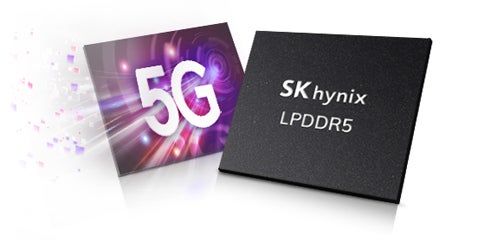Two memory chips from Korea's SK Hynix mysteriously found in Huawei Mate 60 Pro

We're not sure if random people in China gave each other high fives after Huawei introduced the Mate 60 Pro late last month, but the feeling is that by producing the 7nm Kirin 9000s 5G chipset that powers the device, Huawei once again outsmarted the U.S. by working around U.S. export rules that were designed to keep cutting-edge chipsets out of Huawei's hands. U.S. officials made some noise about investigating how Huawei produced the Kirin 9000s, but another controversy has begun.
Chipmaker SK Hynix says that it has been "strictly abiding by the US government’s export restrictions"
According to CNN, South Korean chipmaker SK Hynix is trying to figure out how two of its memory chips ended up inside Huawei's Mate 60 Pro. Canada's Techinsights did a teardown of the new flagship handset and discovered that an SK Hynix 12GB LPDDR5 RAM chip was used by Huawei along with a 512GB NAND memory chip from the same company.

SK Hynix 12GB LPDDR5 RAM chip was found inside the Huawei Mate 60 Pro
Speaking to CNN, G Dan Hutcheson, vice chair of TechInsights, said, "The significance of the development is that there are restrictions on what SK Hynix can ship to China. Where do these chips come from? The big question is whether any laws were violated." RAM is used to store data short-term so that it can be quickly retrieved without going through long-term memory. NAND flash memory is used for data that will be stored long-term and continues to store data even if the device using it has no battery power.
A spokesman for SK Hynix told CNN yesterday that it is aware that its memory chips were found in the Mate 60 Pro and said that the company is investigating. The company said that "SK Hynix is strictly abiding by the U.S. government's export restrictions," and stated that it "no longer does business with Huawei since the introduction of the U.S. restrictions against the company." The revision to the U.S. export rule that is supposed to keep cutting-edge chips away from Huawei was announced in 2020 (more on this later).
Some believe that the memory chips were obtained by Huawei in the secondary markets and were not bought directly from SK Hynix. Another possibility is that Huawei, prior to the revision made to the U.S. export rules, stockpiled enough of the aforementioned components for future use. Techinsights says that it is still looking over the Mate 60 Pro and found that most of the components used in the device were supplied by Chinese companies.
Two U.S. congressmen want tighter restrictions on tech exports to China
It also said that the phone is indeed equipped with a 7nm Kirin 9000s 5G application processor designed by Huawei's HiSilicon semiconductor unit and built by China's largest foundry, SMIC. How SMIC was able to produce the chips without using cutting-edge lithography equipment is another question. While SMIC did produce 7nm chips a couple of years ago, they were not smartphone quality and were used for computers doing cryptocurrency mining.
While the White House is looking into how the Kirin 9000s chips were made, U.S. congressmen Mike Gallagher (R-WI) and Michael McCaul (R-TX) called on the U.S. to tighten restrictions on exports of technology to China.
Besides introducing the Mate 60 Pro on August 30th, last week Huawei announced a premium version of the phone called the Mate 60 Pro+. This model is also powered by the Kirin 9000s chipset. Before it introduced the new flagship models, Huawei received licenses allowing it to import special versions of Qualcomm's 4nm Snapdragon 8+ Gen 1 SoC chipset to use with the 2022 flagship Mate 50 line and this year's P60 series. These chips were tweaked to prevent them from working with 5G networks.
The last time Huawei released a flagship that used its homegrown Kirin chip was back in 2020 when the Mate 40 line featured the Kirin 9000 and Kirin 9000E APs which were built by TSMC using its 5nm process node.










Things that are NOT allowed: